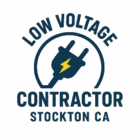Smart Building Trends in Stockton: How Low Voltage Contractors Are Leading the Way
Introduction
Stockton, California, is rapidly embracing smart building technologies, with Commercial Low Voltage Wiring Stockton services playing a key role as property owners look for sustainable, connected, and efficient solutions. From energy management systems to advanced security networks, low voltage contractors are playing a crucial role in this transformation. Unlike traditional electrical contractors, low voltage specialists design and install the backbone of modern smart buildings—data cabling, structured wiring, automation systems, and integrated controls. This article explores how low voltage contractors are leading Stockton’s smart building revolution, the latest trends shaping the industry, and what businesses and homeowners need to know to stay ahead.
Table of Contents
- What Is a Smart Building?
- Why Stockton Is Adopting Smart Building Technology
- The Role of Low Voltage Contractors in Smart Buildings
- Key Smart Building Trends in Stockton
- Energy Efficiency & Sustainability
- Advanced Security & Access Control
- Smart HVAC & Lighting Systems
- IoT Integration & Building Automation
- Fiber Optic & Structured Cabling Networks
- Benefits for Stockton Businesses and Homeowners
- Challenges and Considerations
- Future Outlook: Where Smart Buildings in Stockton Are Headed
- Conclusion
- FAQs
What Is a Smart Building?
A smart building uses advanced technologies—such as sensors, automation systems, and data analytics—to improve energy efficiency, comfort, safety, and overall building performance. According to the U.S. Department of Energy, smart buildings can reduce energy consumption by up to 30% through optimized HVAC, lighting, and system integration. Unlike conventional properties, smart buildings are dynamic, adjusting in real time to occupants’ needs and environmental conditions.
Why Stockton Is Adopting Smart Building Technology
Stockton’s growth as a hub for business development and housing expansion has driven demand for more efficient, connected infrastructure. California’s strict energy codes (Title 24) and sustainability initiatives are also pushing property owners to upgrade. As the city continues to modernize, smart buildings provide a competitive advantage by lowering operating costs, enhancing tenant satisfaction, and increasing property values.
The Role of Low Voltage Contractors in Smart Buildings
Low voltage contractors are at the center of Stockton’s smart building ecosystem. Unlike high-voltage electricians who handle heavy power, low voltage specialists focus on systems that operate below 50 volts, including:
- Structured cabling for internet, phone, and data networks
- Fiber optic installations for high-speed connectivity
- Security systems such as CCTV, access control, and alarms
- Audio-visual integration for conference rooms and classrooms
- Building automation systems (BAS) connecting HVAC, lighting, and IoT devices
By designing, installing, and maintaining these infrastructures, low voltage contractors ensure that smart buildings operate seamlessly.
Key Smart Building Trends in Stockton
1. Energy Efficiency & Sustainability
California leads in renewable energy and green construction. Stockton buildings are adopting smart meters, automated HVAC controls, and LED lighting systems that adjust based on occupancy. According to the International Energy Agency, building automation could cut global carbon emissions by 10% by 2040.
2. Advanced Security & Access Control
Low voltage contractors are deploying IP-based CCTV cameras, biometric entry systems, and cloud-managed access control, giving Stockton businesses stronger security with real-time monitoring.
3. Smart HVAC & Lighting Systems
Integrated HVAC systems adjust airflow and temperature using occupancy sensors, while daylight harvesting lighting systems save energy by balancing natural and artificial light.
4. IoT Integration & Building Automation
IoT devices connect everything—from thermostats and security cameras to elevators and fire alarms—into centralized control systems. This allows property managers to monitor performance, detect issues early, and optimize building operations.
5. Fiber Optic & Structured Cabling Networks
As smart buildings demand faster data speeds, fiber optic cabling is becoming the backbone of Stockton’s connected infrastructure. Contractors are installing CAT6, CAT6A, and fiber optic solutions to future-proof properties for 5G and beyond.
Benefits for Stockton Businesses and Homeowners
- Lower energy bills through automation and efficiency
- Improved security with smart surveillance and access control
- Increased property value due to modern, connected infrastructure
- Enhanced occupant comfort with personalized lighting and climate control
- Future-ready investments aligned with California’s sustainability goals
Challenges and Considerations
While the benefits are clear, Stockton property owners face challenges such as:
- Upfront costs of smart building systems
- Cybersecurity risks from interconnected devices
- Maintenance requirements for advanced systems
- Need for skilled contractors familiar with low voltage integration
Future Outlook: Where Smart Buildings in Stockton Are Headed
By 2030, analysts expect over 50% of U.S. commercial buildings to integrate smart technologies. In Stockton, this means an increasing reliance on low voltage contractors who can design and implement future-ready infrastructures. With California’s push for net-zero energy buildings, Stockton is positioned to become a leader in sustainable smart development.
Conclusion
Smart buildings are no longer futuristic—they’re becoming standard in Stockton’s residential and commercial landscapes. Low voltage contractors are leading this transformation by delivering the structured cabling, automation, and security systems that make these buildings work. For property owners, investing in smart technologies today not only ensures compliance with California’s energy mandates but also provides long-term savings and increased property value. Stockton’s future is connected, sustainable, and secure—and low voltage contractors are the ones making it possible.
FAQs
What does a low voltage contractor do in a smart building?
They install and maintain structured cabling, automation systems, and security technologies that connect and power smart building functions.
Are smart buildings expensive to maintain?
While the initial investment is higher, smart buildings reduce operating costs through energy efficiency, predictive maintenance, and automated systems.
How do smart buildings help Stockton homeowners?
They offer lower utility bills, better security, and improved comfort through automated climate and lighting control.
What technologies are most common in Stockton smart buildings?
CCTV, access control, HVAC automation, fiber optic cabling, and IoT-enabled devices are among the most widely used.
Why are low voltage contractors essential for smart building projects?
They provide the technical expertise to design, install, and integrate the communication and control systems that power smart infrastructure.
